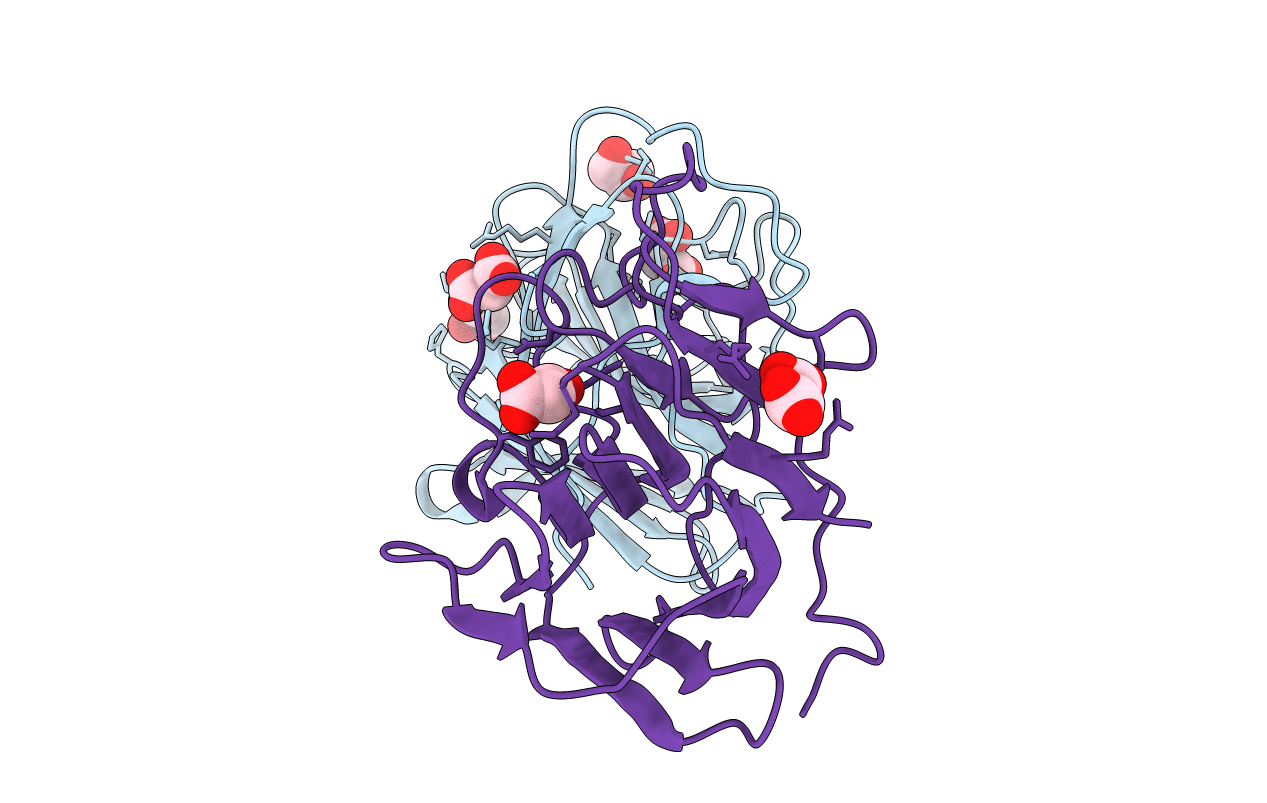Abstact
Tripartite motif (TRIM)7 is an E3 ubiquitin ligase that was first identified through its interaction with glycogenin-1 (GN1), the autoglucosyltransferase that initiates glycogen biosynthesis. A growing body of evidence indicates that TRIM7 plays an important role in cancer development, viral pathogenesis, and atherosclerosis and, thus, represents a potential therapeutic target. TRIM family proteins share a multidomain architecture with a conserved N-terminal TRIM and a variable C-terminal domain. Human TRIM7 contains the canonical TRIM motif and a B30.2 domain at the C terminus. To contribute to the understanding of the mechanism of action of TRIM7, we solved the X-ray crystal structure of its B30.2 domain (TRIM7B30.2) in two crystal forms at resolutions of 1.6 Å and 1.8 Å. TRIM7B30.2 exhibits the typical B30.2 domain fold, consisting of two antiparallel β-sheets of seven and six strands, arranged as a distorted β-sandwich. Furthermore, two long loops partially cover the concave face of the β-sandwich defined by the β-sheet of six strands, thus forming a positively charged cavity. We used sequence conservation and mutational analyses to provide evidence of a putative binding interface for GN1. These studies showed that Leu423, Ser499, and Cys501 of TRIM7B30.2 and the C-terminal 33 amino acids of GN1 are critical for this binding interaction. Molecular dynamics simulations also revealed that hydrogen bond and hydrophobic interactions play a major role in the stability of a modeled TRIM7B30.2-GN1 C-terminal peptide complex. These data provide useful information that could be used to target this interaction for the development of potential therapeutic agents.



